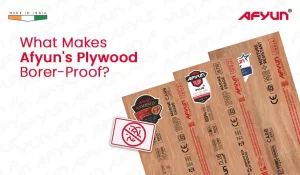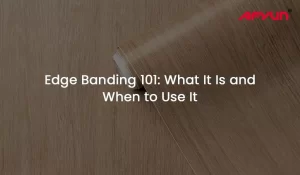So you’ve got your hands on some trusty plywood, ready to bring your project to life. But wait, how do you transform those individual panels into a seamless masterpiece?
The answer lies in the art of glueing and joining.
Don’t worry, even if you’re new to the world of woodworking, this guide will equip you with the knowledge and confidence to tackle this task like a pro.
Step 1: Choosing Your Glue
The first step is picking the right glue for the job.
For plywood projects, your best bet is aliphatic wood glue. It’s easy to use, dries strong, and cleans up with just water. Look for brands like Titebond II or Gorilla Glue Carpenter’s Wood Glue.
Avoid using superglue – it dries too fast and won’t create a strong, lasting bond.
Step 2: Prepping Your Plywood
Before the glue flies, make sure your plywood is ready to be attached.
Here’s how:
- Cut clean: Use a sharp saw to ensure straight, even cuts. Rough edges won’t glue well.
- Sand smooth: Give both glueing surfaces a light sanding to remove any dust or debris.
- Test fit: Dry-fit your plywood pieces to ensure they align perfectly. Practice makes perfect!
Step 3: Spreading the Glue
Now comes the fun part – applying the glue! Use a brush or roller to spread a thin, even layer on one of the glueing surfaces. Avoid putting too much – excess glue weakens the joint.
Step 4: Clamp the Pieces
Here’s where the clamps come in.
Clamp the glued pieces together firmly, applying even pressure across the entire joint.
Use enough clamps to prevent gaps and ensure a strong bond. If you don’t have clamps, improvise with weights like heavy books or bricks.
Step 5: Let the Glue Set
Resist the urge to break out the dance moves just yet. The glue needs time to work its magic.
Refer to the glue’s instructions for drying time, which can vary depending on the brand and thickness of the glue layer.
Step 6: Cleaning Up the Mess
Once the glue is dry, you might notice some squeeze-out around the joint. Wipe it away with a damp cloth before it dries completely.
Remember, a clean project is a happy project!
Bonus Tip: Exploring Different Techniques
While this guide focused on basic butt joints, the world of plywood joinery is vast! For stronger or more aesthetically pleasing joints, consider exploring techniques like:
- Lap joints: These create a stronger bond by overlapping the plywood pieces.
- Dado joints: These involve cutting grooves in one piece for the other to fit into, creating a flush and secure joint.
- Pocket hole joints: These use screws hidden within the joint for a clean, visible surface.
Conclusion
So, start off by choosing the glue, prepping the plywood, spreading the glue, clamping the plywood pieces, and waiting for the glue to set. As the icing, clean the plywood. That’s that.
Practice makes perfect. Don’t be afraid to experiment with different techniques and glues to find what works best for your project.
Quick Links:
Plywood Price | Plywood Price in India | Calibrated Plywood Price | Gurjan Plywood | Fire Retardant Plywood | Waterproof Plywood | Marine Plywood Price










